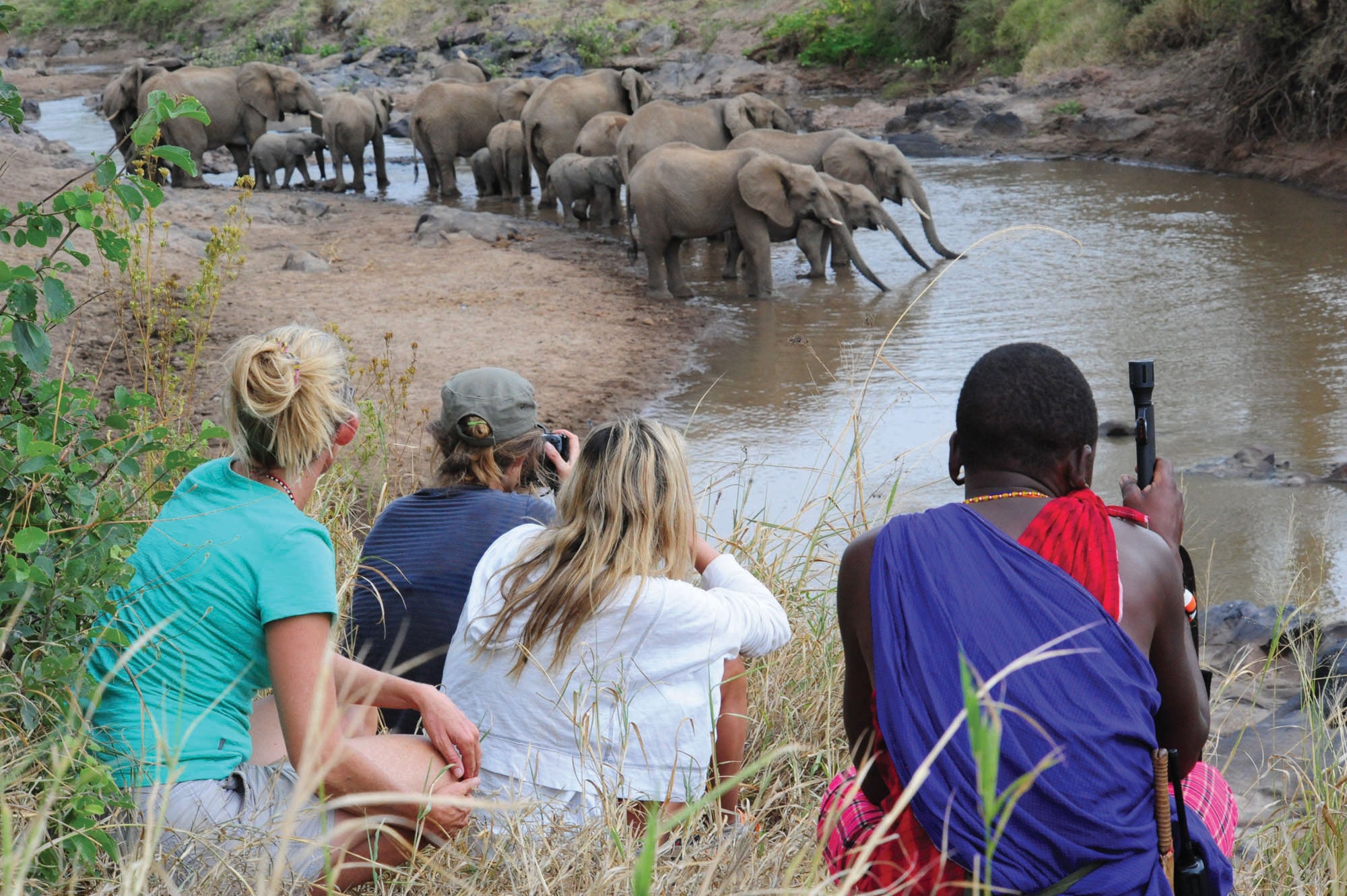Hike With Elephants and Lions in Kenya

'Karisia Walking Safaris'
The equatorial sun sank to the horizon, turning the sky fiery orange. Under normal circumstances, I would have been mesmerized by this sunset. But at least 30 baboons kept distracting me, scampering around the rock dome where we were sitting, looking for a place to bed down for the night—away from hyenas, leopards, and other predators. They looked like kids on a jungle gym, jumping from perch to perch and skittering across the smooth stone.
When I signed on for a Kenyan safari with my son Tate (then 11), I knew we wanted to see wildlife on its own terms. I wasn’t interested in drive-by sightings or staying in a stuffy lodge, the standard way to see the African wilderness. However, it’s hard to find an alternative. Wildlife preserves like Kenya’s famed Masai Mara are dominated by four-wheel-drive tours.
But in Kenya’s north-central region, in an area called Laikipia, locals are experimenting with a new type of wildlife management and adventure tourism. Rather than government-regulated parks, the land remains largely community- and privately owned; locals have adopted a “let’s get along approach,” grazing their goats and cattle alongside elephants, giraffes, zebras, lions, and leopards. Not only has it created tourism jobs where they’re sorely needed, but endemic wildlife has rebounded, and the region now has the most diverse population of large mammals in Kenya. Amid this, Karisia Walking Safaris has established a program of camel-supported treks for people who want to see the landscape on foot.
Tate and I embarked on a four-day journey in February. It was the end of the dry season, with warm, clear days, and though I’m a proud backpacker, I was glad we only had to carry daypacks. On the first morning, we crossed a scrubland dominated by low brush and acacia trees. The vegetation grew sparsely, making it easy to take a meandering route across the trailless plain. Our guide Rana, who grew up in the area, served as biologist, botanist, and navigator. Our crew also included a rifle-toting guard (the gun is rarely used, he said, but handy to scare off a charging elephant) and a camel driver (in case anyone needed a break from hiking, which Tate took advantage of about 10 minutes after we started). All three men were from the local Masai community.
Moving at a walking pace, of course, means you cover a lot less ground than on a conventional safari, and you can’t zoom over to a waterhole when the hartebeest show up. In the first couple of hours, we only saw a few birds, and I wondered if this really was such a good idea. But then we came over a rise and saw three Grevy’s zebras grazing. Only about 2,000 of the endangered animals remain in the wild. Not long after, we came across a family of giraffes nibbling on acacias. In both cases, we were able to walk close by the animals, and I could’ve stayed all day if not for the evening’s agenda.
Thanks to the camels, we enjoyed luxuries like spacious canvas tents, thick mattresses, chairs, tables, and a shower. The full-service crew—support staff set up camp and cook, and serve sundowners in the evening—takes some getting used to if you’re accustomed to DIY camping. But, by the third night, I didn’t have any qualms sipping a gin and tonic.
We saw plenty more zebras and giraffes in the days that followed that first sighting, but not all the wildlife was so indifferent to our presence. Gazelles and impalas tended to bound away, and we only saw elephants and oryx from a distance. One day, as we hiked slowly uphill, weaving through boulders and dry, knee-high grass, a striped hyena darted out of its hiding place, just a few yards away. It vanished in a furry blur, but not before leaving a big impression: When you’re on foot, whether in grizzly country in Alaska or lion-leopard-hippo- elephant-cheetah-hyena country in Kenya, the wilderness seems a little wilder.
DO IT
FLY into Nairobi. Arrange a shuttle (six to seven hours) to Karisia’s camp; charter flights also available.
TRIP LENGTH: Three to 10 days
SEASON: Year-round; in June and July, vegetation is green and baby animals are out. GUIDE: Karisia Walking Safaris; cost starts at $400/person per night (includes $100/day for conservation and community fees).